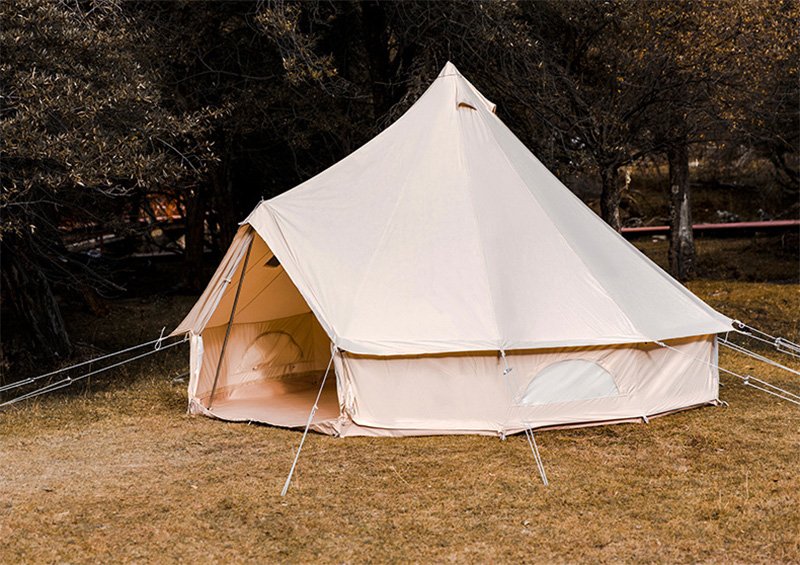In recent years, outdoor spaces have become more than places of retreat — they have turned into immersive creative environments. A bell canvas tent provides a unique foundation for this artistic evolution, merging design innovation with the natural world. Artists and designers are now embracing these elegant structures to create living installations that speak of sustainability, expression, and harmony with nature.
A Natural Canvas for Creative Exploration
What makes a bell canvas tent special is its ability to transform space. The round, organic shape allows for fluid design concepts that echo natural forms. Unlike rigid structures, the tent’s soft contours and breathable fabric invite interaction and experimentation. Artists can paint, dye, or project light onto the canvas, creating pieces that evolve throughout the day as sunlight shifts.
This adaptable surface turns every creative idea into an experience rather than a static display. The canvas can hold traditional artwork or serve as a backdrop for visual storytelling, where nature’s own elements — wind, rain, and shadow — become part of the art itself.
Sustainability at the Heart of Design
Modern art and design increasingly prioritise eco-conscious materials, and canvas tents perfectly fit that vision. Constructed from natural fibres and designed for durability, they symbolise a step away from disposable culture. When used in outdoor exhibitions, the bell canvas tent represents sustainable thinking — beauty without excess, art without environmental compromise.
Artists and curators often choose these tents to host installations that draw attention to environmental issues. The use of organic textures and earthy tones complements messages of conservation and respect for the planet. This blend of functionality and symbolism makes the structure not only practical but also deeply meaningful in the design process.
A Space for Immersive Experiences
Art is no longer confined to walls or galleries. Creative minds are using tents as interactive spaces that engage multiple senses. Inside a bell canvas tent, light can be softened, sounds amplified, and scents contained — making it an ideal setting for immersive exhibitions or performances.
Designers have experimented with hanging sculptures, projection mapping, and even scent art within these spaces. The gentle enclosure fosters focus and introspection, allowing visitors to experience the artwork in a personal and contemplative way. As night falls, illuminated designs on the tent’s exterior transform it into a glowing installation, blurring the line between shelter and sculpture.
Blending Architecture, Art, and Function
The bell canvas tent is also redefining the relationship between art and architecture. Its geometry offers symmetry and proportion that inspire design concepts rooted in both aesthetics and practicality. Many creators now treat these tents as architectural art — temporary structures that hold cultural, visual, and emotional value.
From fashion shows and open-air galleries to artist residencies, this design form allows flexibility and elegance in equal measure. The lightweight framework and organic silhouette adapt easily to different environments — from forests and coastlines to urban courtyards. Each location influences the final expression, reminding us that art and nature are inseparable.
Inspiring Future Creators
The growing use of tents in creative industries reflects a broader cultural shift — one that celebrates minimalism, sustainability, and emotional connection to the environment. A bell canvas tent encourages future artists to think beyond traditional materials and spaces. It challenges them to work with nature rather than against it.
For design students or emerging creators, it offers lessons in balance and adaptability. The tent teaches that structure and creativity need not be opposites; instead, they can coexist beautifully when guided by imagination and respect for natural surroundings.
Conclusion
The fusion of art, design, and nature is reshaping how creativity is experienced. Through the humble yet expressive bell canvas tent, artists have found a medium that reflects both innovation and mindfulness. It stands as a symbol of how design can embrace the natural world — not by dominating it, but by listening to its rhythm and responding with intention.
As artistic boundaries continue to expand, these tents will remain more than temporary shelters. They will continue to inspire, connect, and remind us that the truest art often lives where creativity meets the open air.

